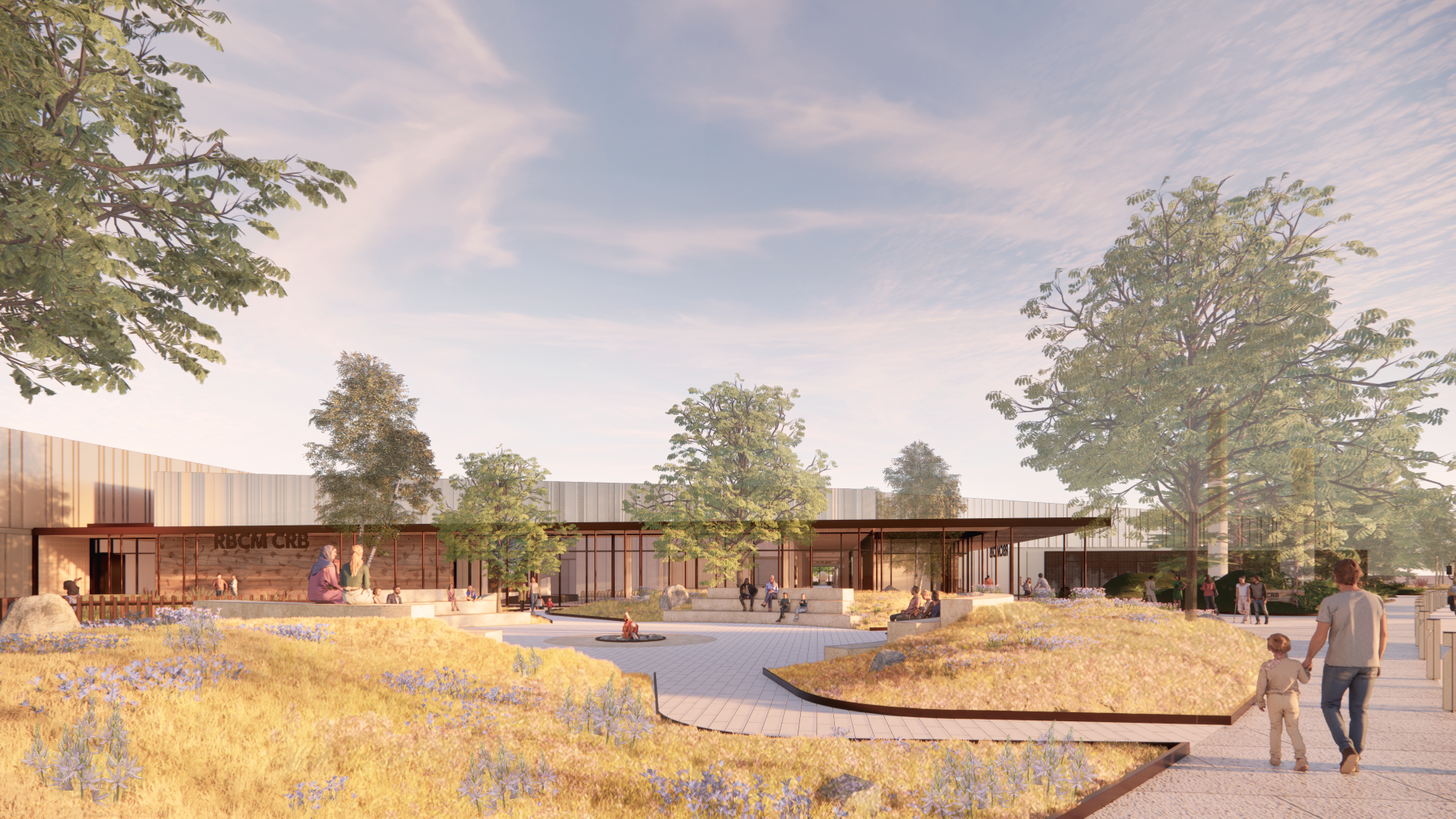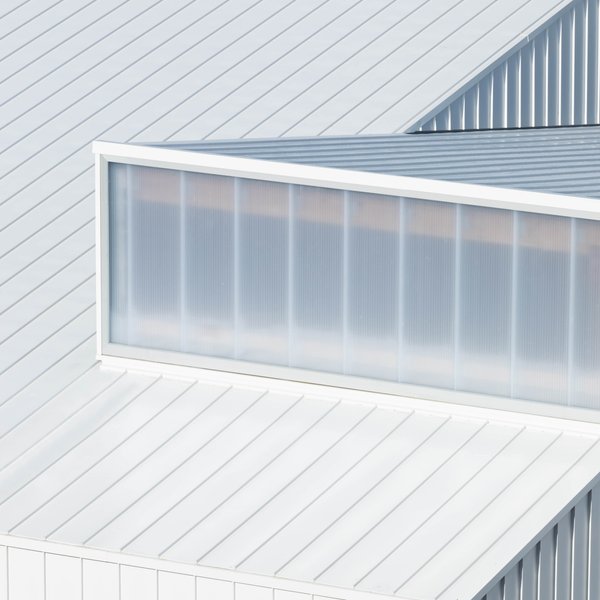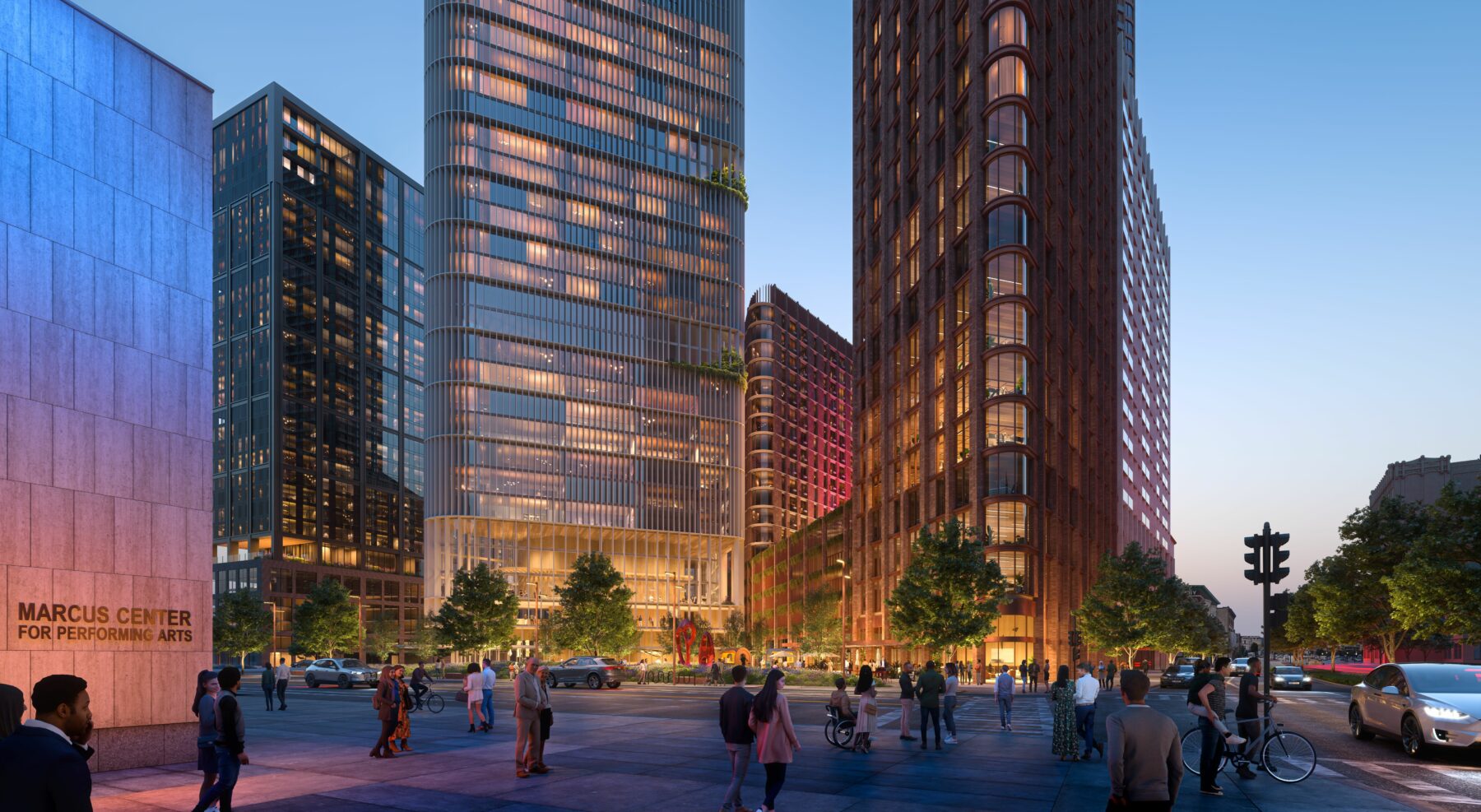The Catalyst Building is a benchmark for sustainable building – designed to be the largest net-zero energy and net-zero carbon building in North America, and the first office building in Washington State constructed out of cross-laminated timber, this project is a fully integrated living laboratory for new sustainability technologies, materials, construction techniques, operational practices, and design.
Summary
Located in Spokane, Washington, the 165,000 sq. ft., 5-storey Catalyst Building is built on an irregular site, which was underutilized and in need of revitalization. The building is connected to the University District by way of the Gateway Bridge – a pedestrian bridge that brings together the two university core areas. Intended as a place where industry and academia can intersect to innovate and collaborate, the building required flexible spaces for both office and academic multi-functional uses. The floor plates were designed to be simple but long span to meet the program requirements.
A Life Cycle Assessment (LCA) of the building, authored by the Carbon Leadership Forum at the University of Washington, concluded that the carbon storage of the timber nearly offsets the embodied carbon impact of construction. By focusing on lower-carbon materials, the conversation around sustainability in the built environment can broaden from only energy usage to total carbon emissions over a building’s lifecycle. This project proves that sustainable development outcomes and new construction methods can coexist with more traditional metrics for affordability, operational efficiency, and tenant comfort.
The Catalyst Building symbolizes both Spokane and Washington State’s commitments to sustainability, and it serves as a hub for growth in the region.
Quote
“This is a comprehensive piece of architecture. It is holistic from the site to the means and methods and everything in between. The cross-laminated pieces of timber are not only well done, but very impactful when you consider embodied carbon. This is a good example of how we can take standard structures and reconsider materiality.”
"This is a vibrant new piece of the city that is set to become the largest net-zero energy and net-zero carbon office building in North America."
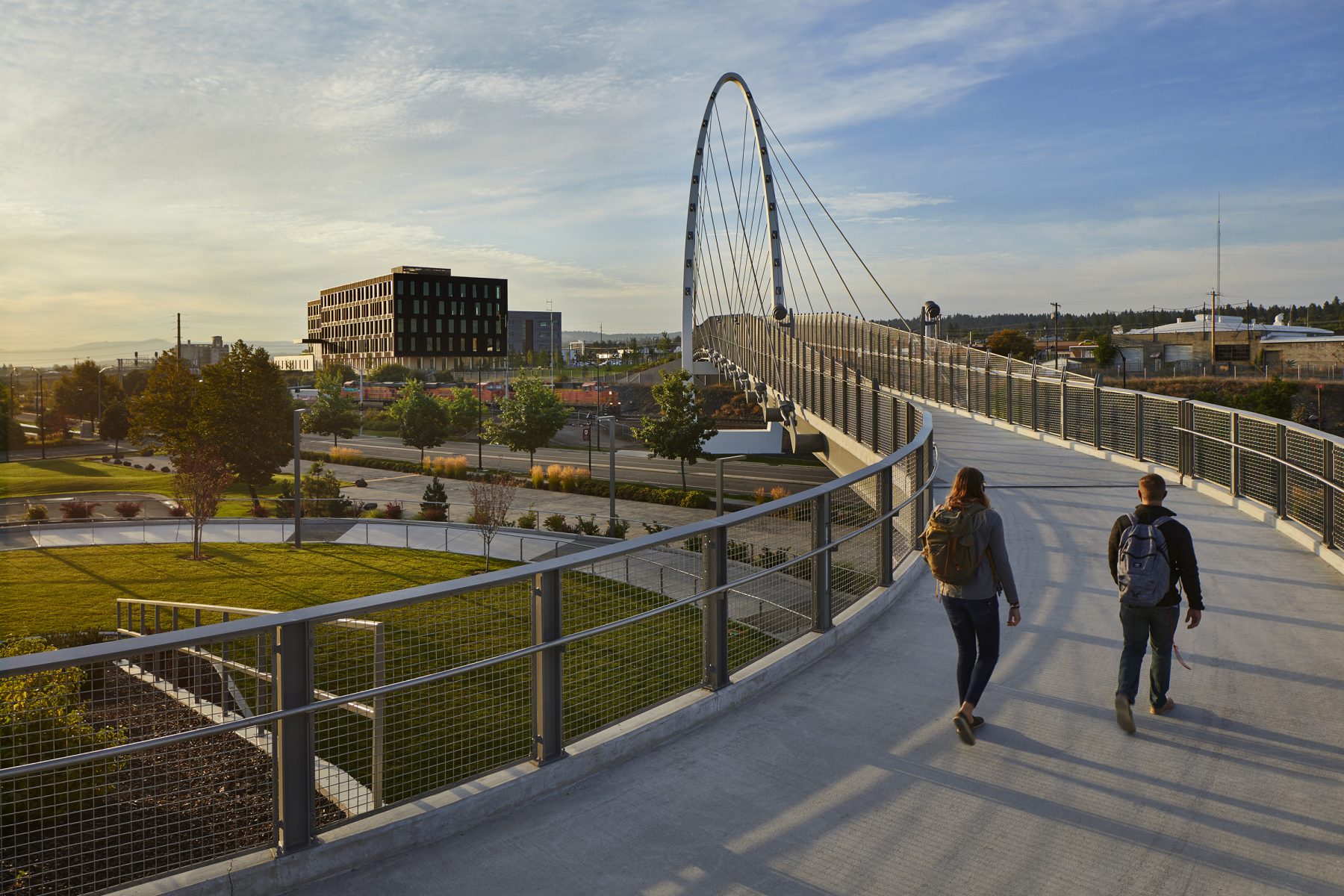
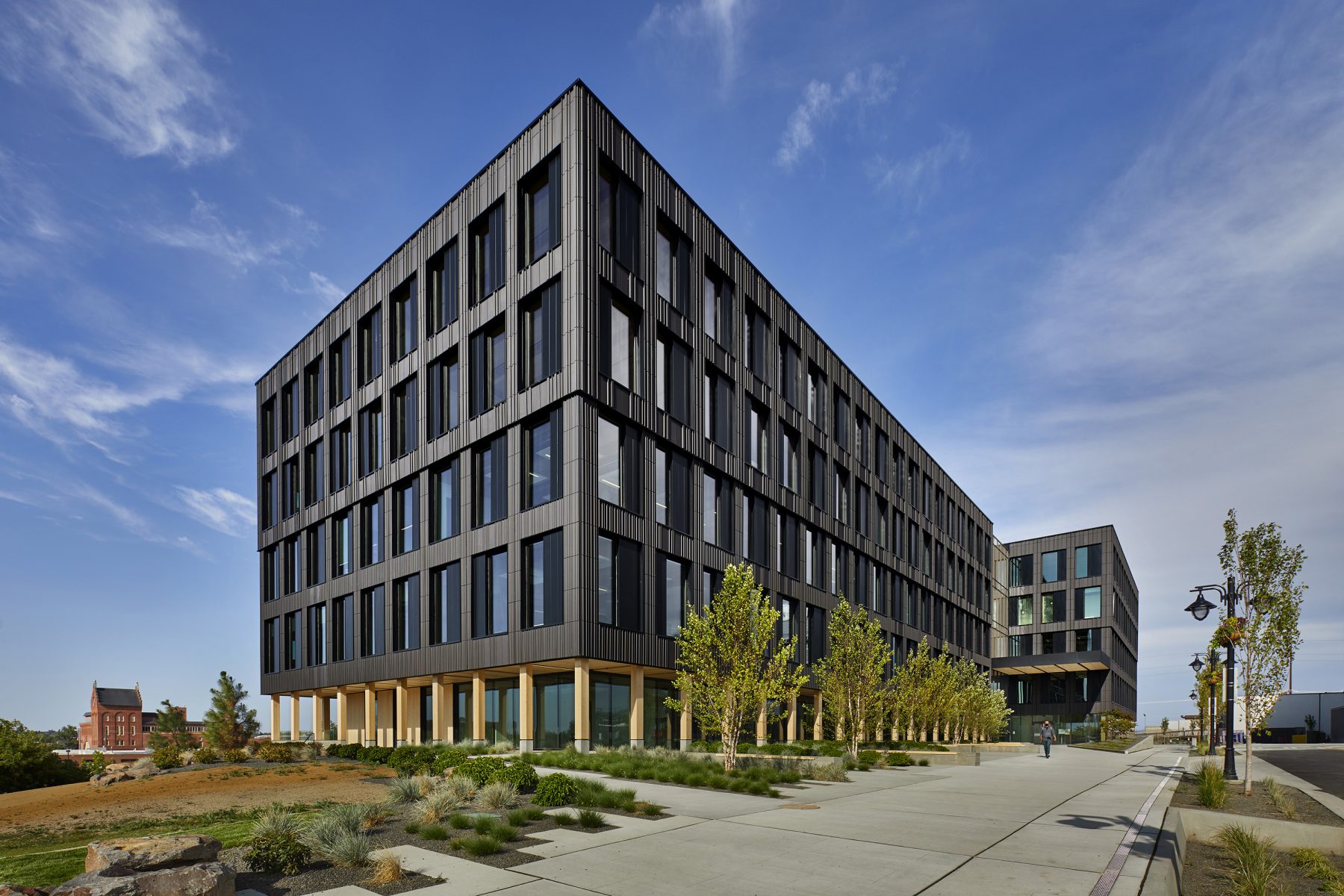

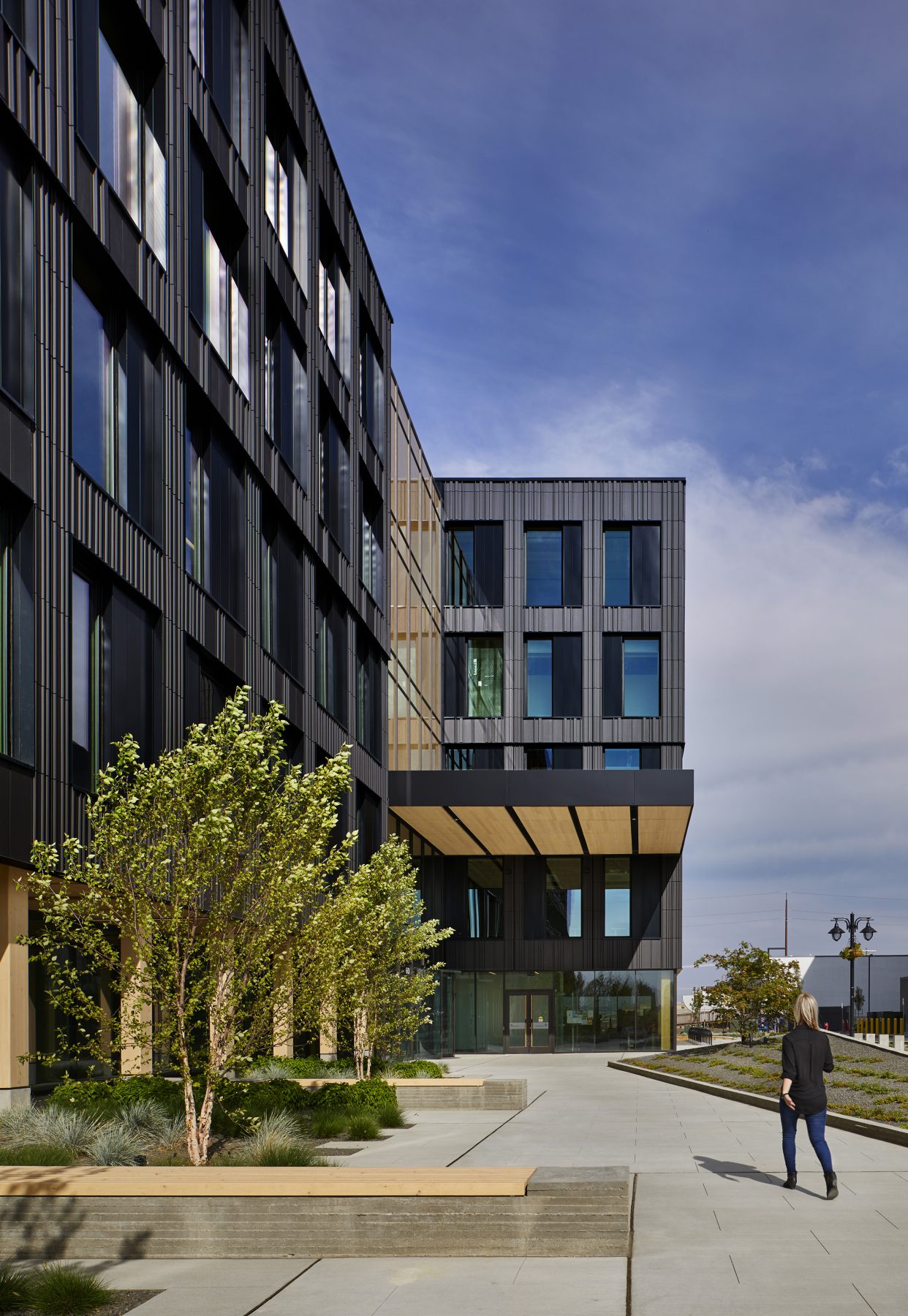
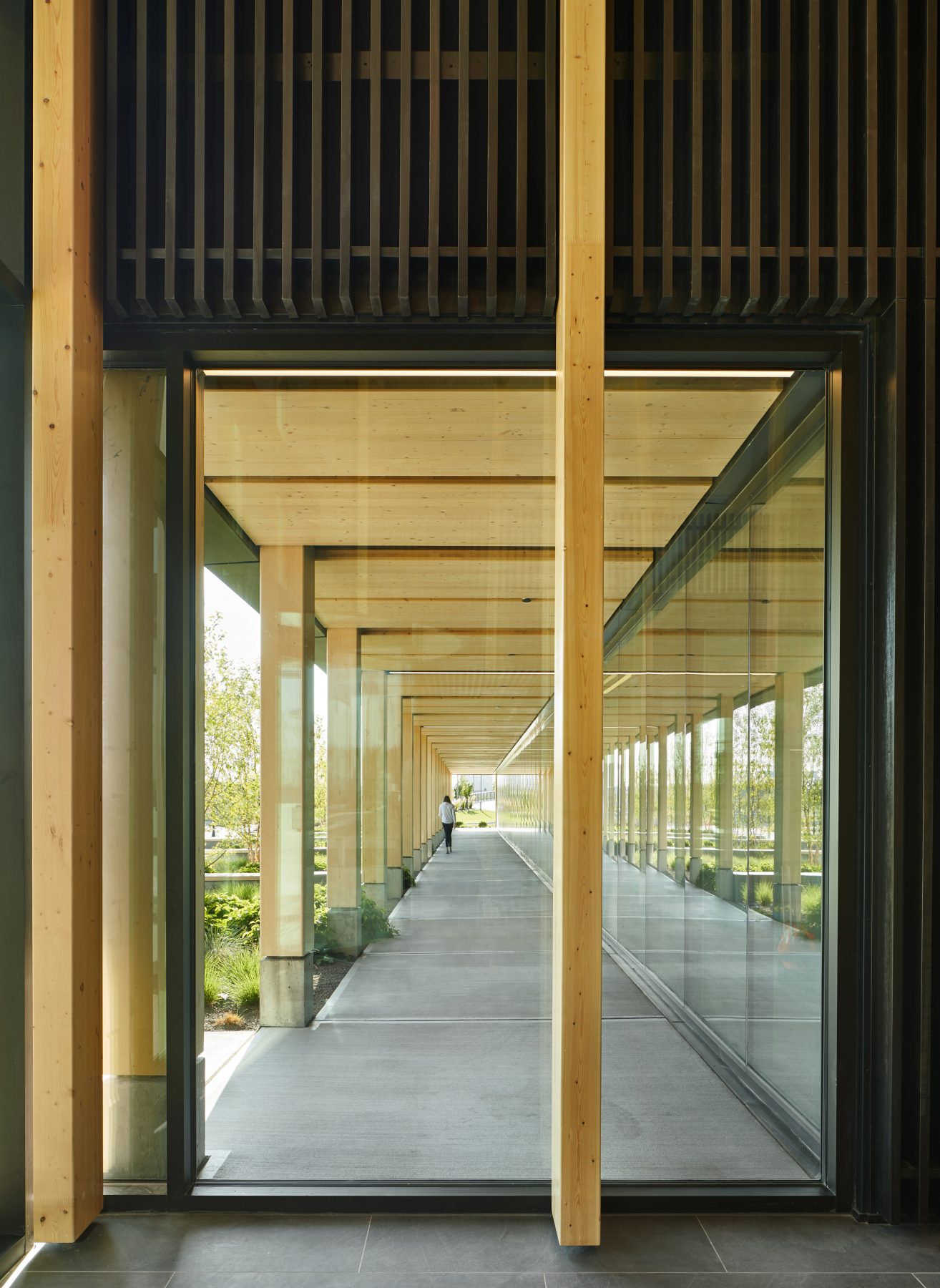
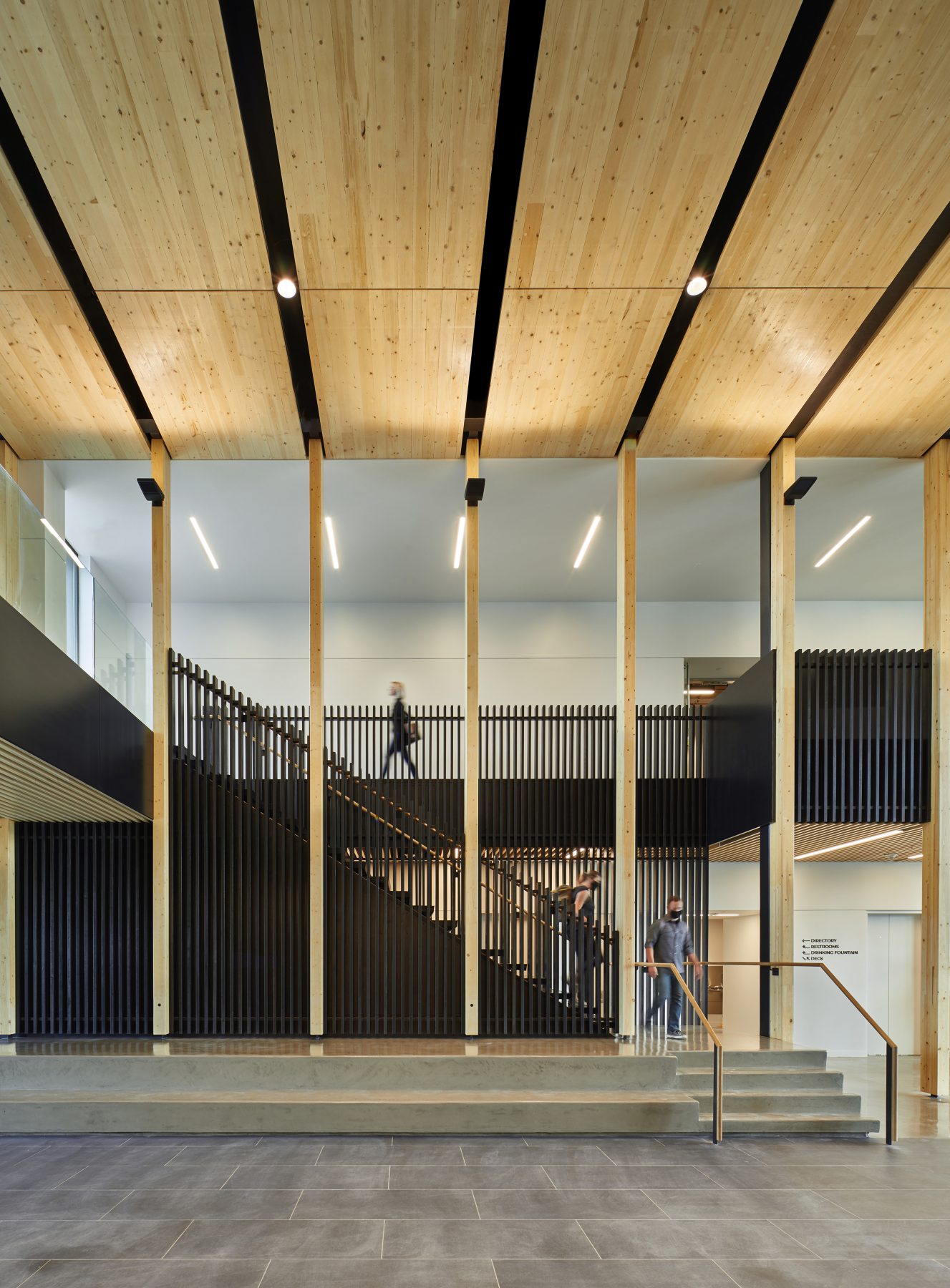

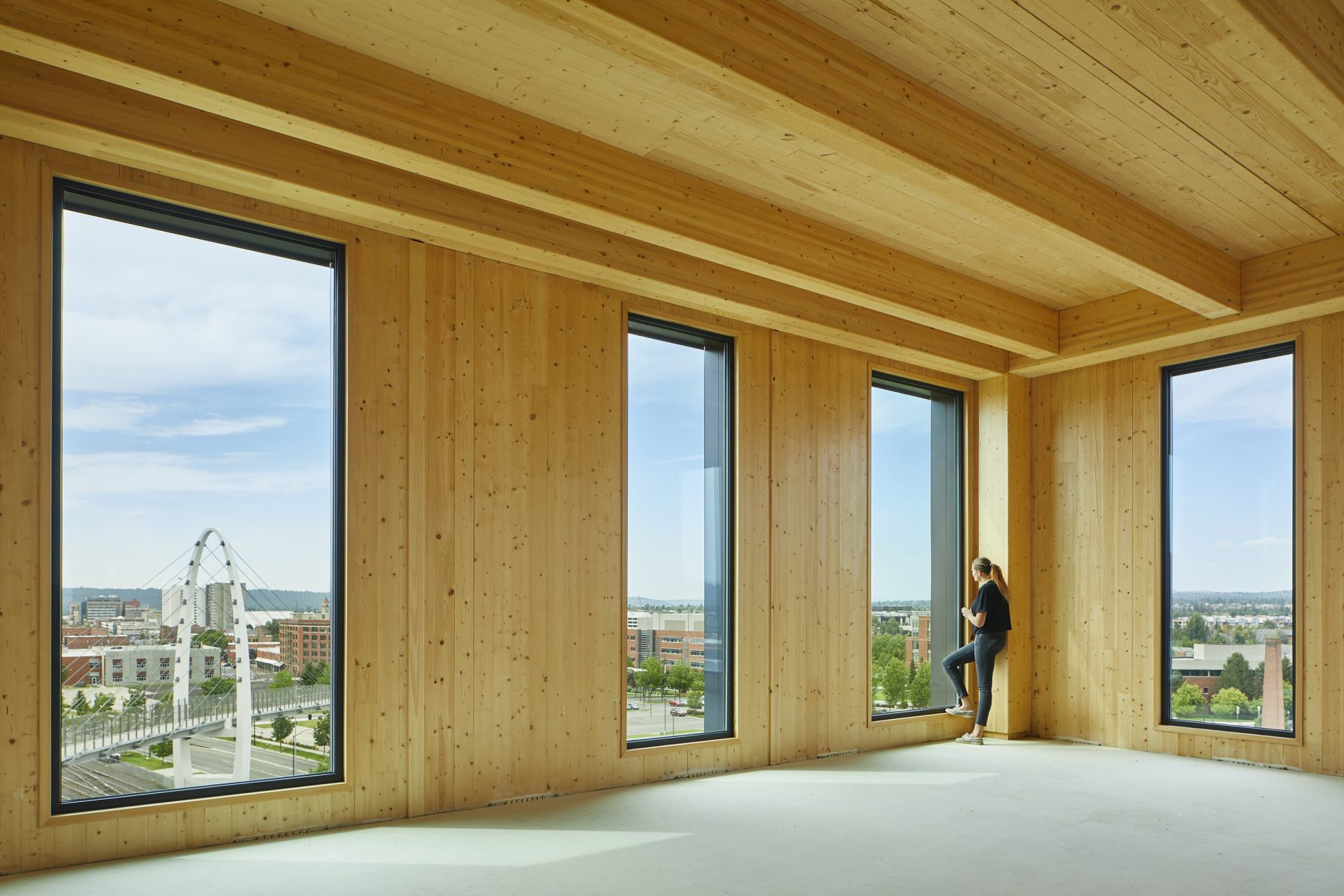
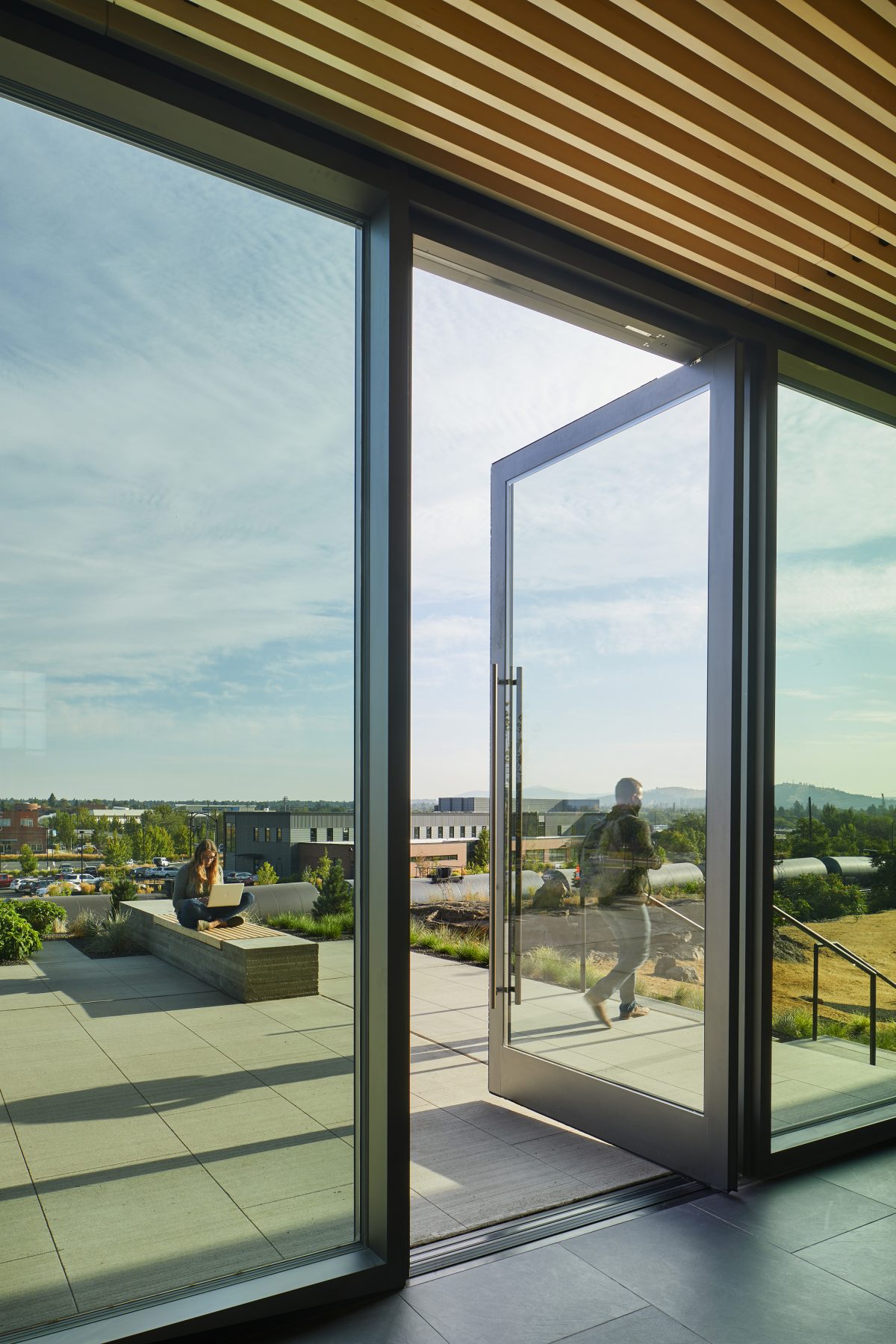

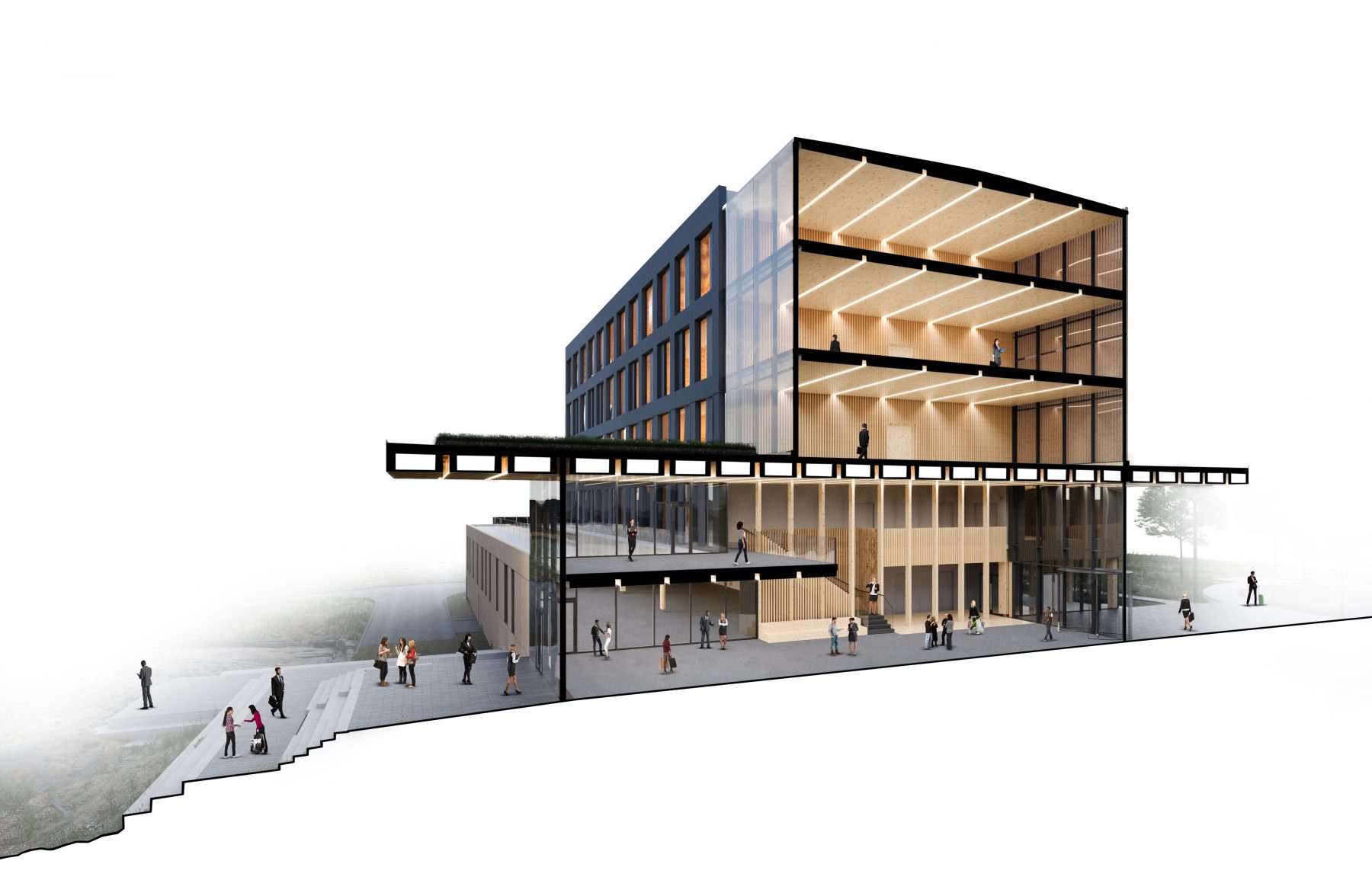
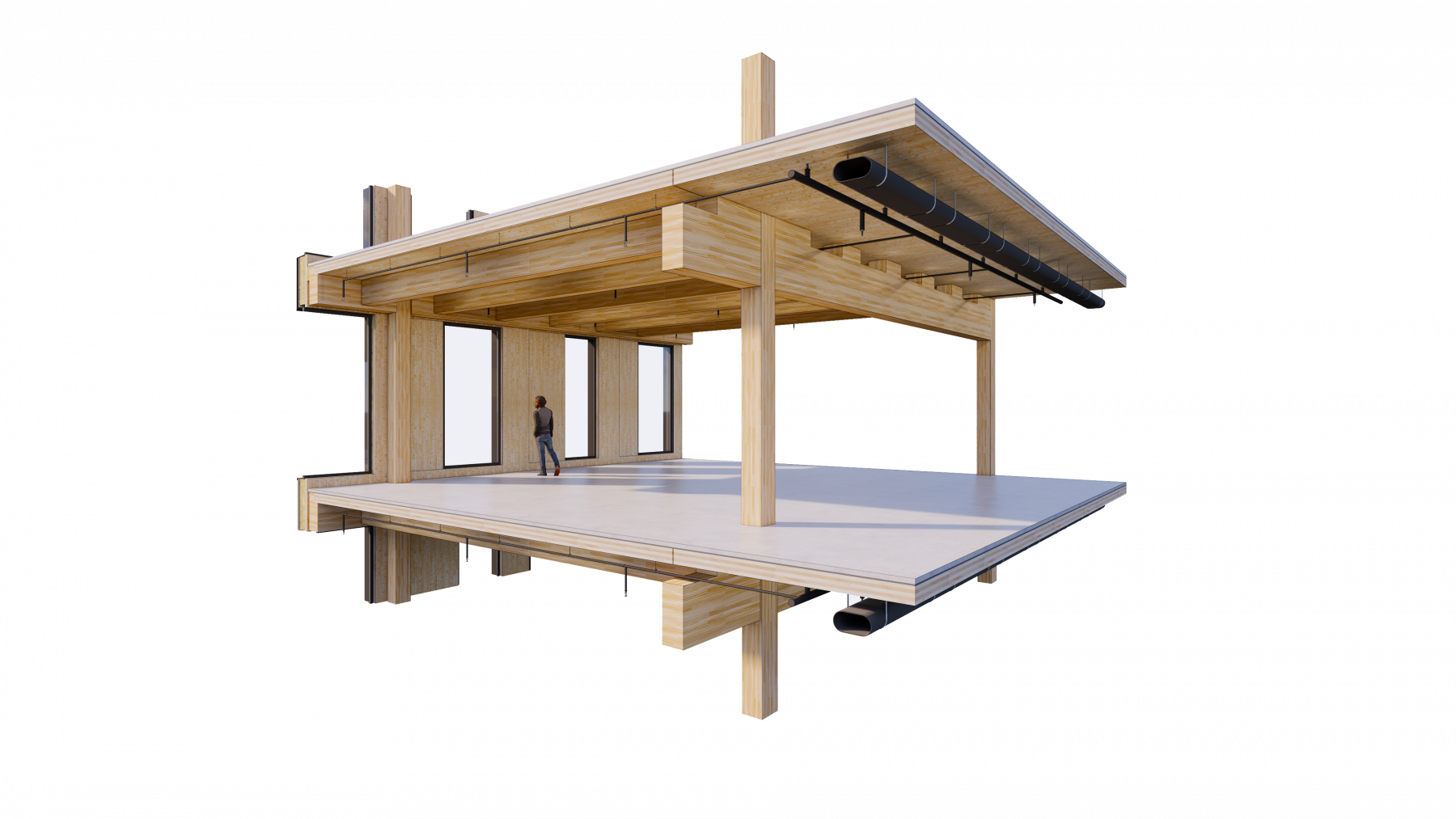
Process
The ambition of the project team was to design and construct a mass timber building that could exceed the performance of a comparable steel and concrete building while showcasing the benefits of CLT concerning aesthetics, building efficiency, and environmental impact. This goal was realized through sustainable MEP design, smart building management systems, and the use of over 4,000 cubic meters of both CLT and glulam products, which have stored 3,713 metric tons of carbon dioxide. The CLT panels used in the building were sourced from local working forests, harvested using sound ecological practices, and manufactured 15 miles from the site.
“Passive-first” strategies include rainwater capture reducing water use, envelope design using Passive House standards, and durable material application to achieve a design life expectancy of 75 years. The building’s airtightness test results were outstanding with Catalyst’s building envelope performing at three times the airtightness required for the Passive House Standard. The Catalyst also draws from a centralized energy plant through a model called an eco-district.
Recognition
Green GOOD DESIGN® Award – Architecture, 2021
–
AIA Innovation Award – Holistic Design, 2020
–
